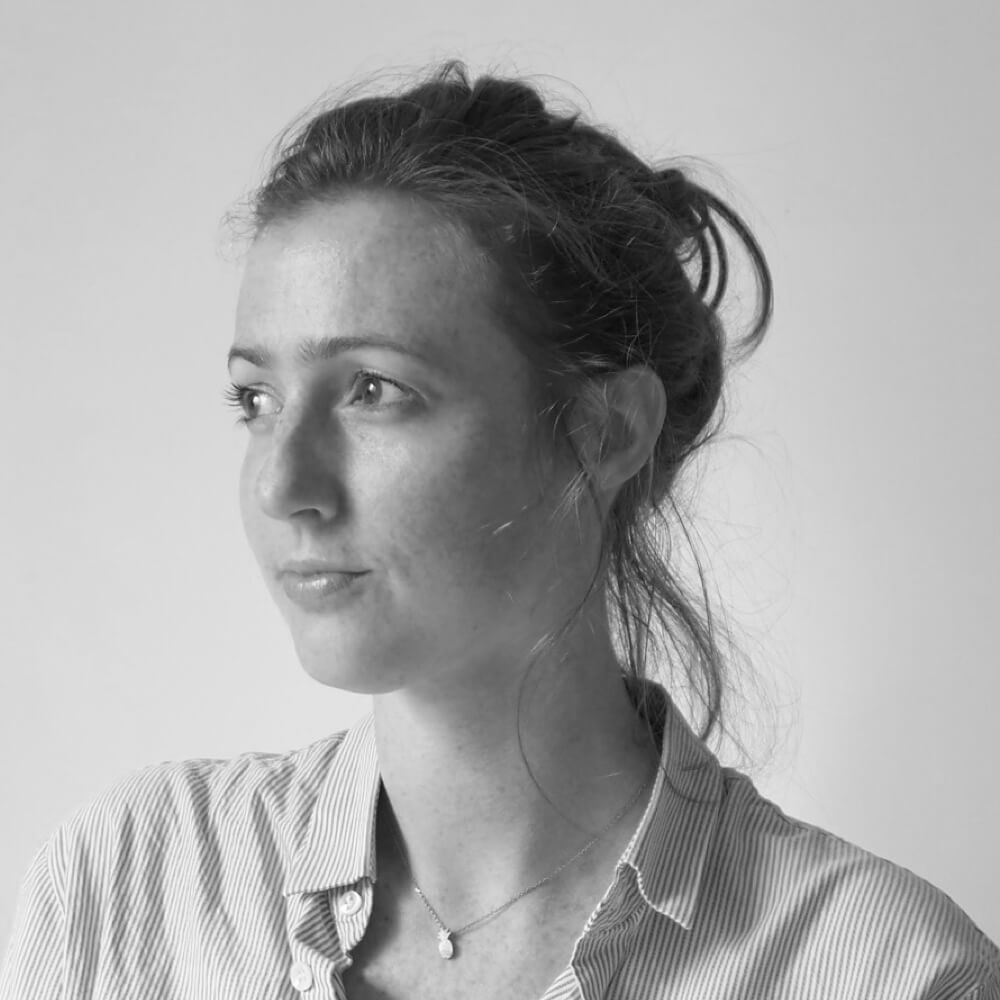Collectible 2019
An innovative showcase of 21st century collectible design.
14th – 17th March 2019
IN MARCH 2018, a new design fair called Collectible, spelt with an American “i”, arrived on the scene with a niche offering. Commandeering five floors of Brussel’s Vanderborght building – a former 1930s furniture store – there were no vintage or historical pieces on show, nor brands or unlimited editions. Instead, the fair’s sole focus was on collectible 21st century design, bringing together eighty international exhibitors made up of galleries, individual designers and design studios who showcased their latest design pieces.
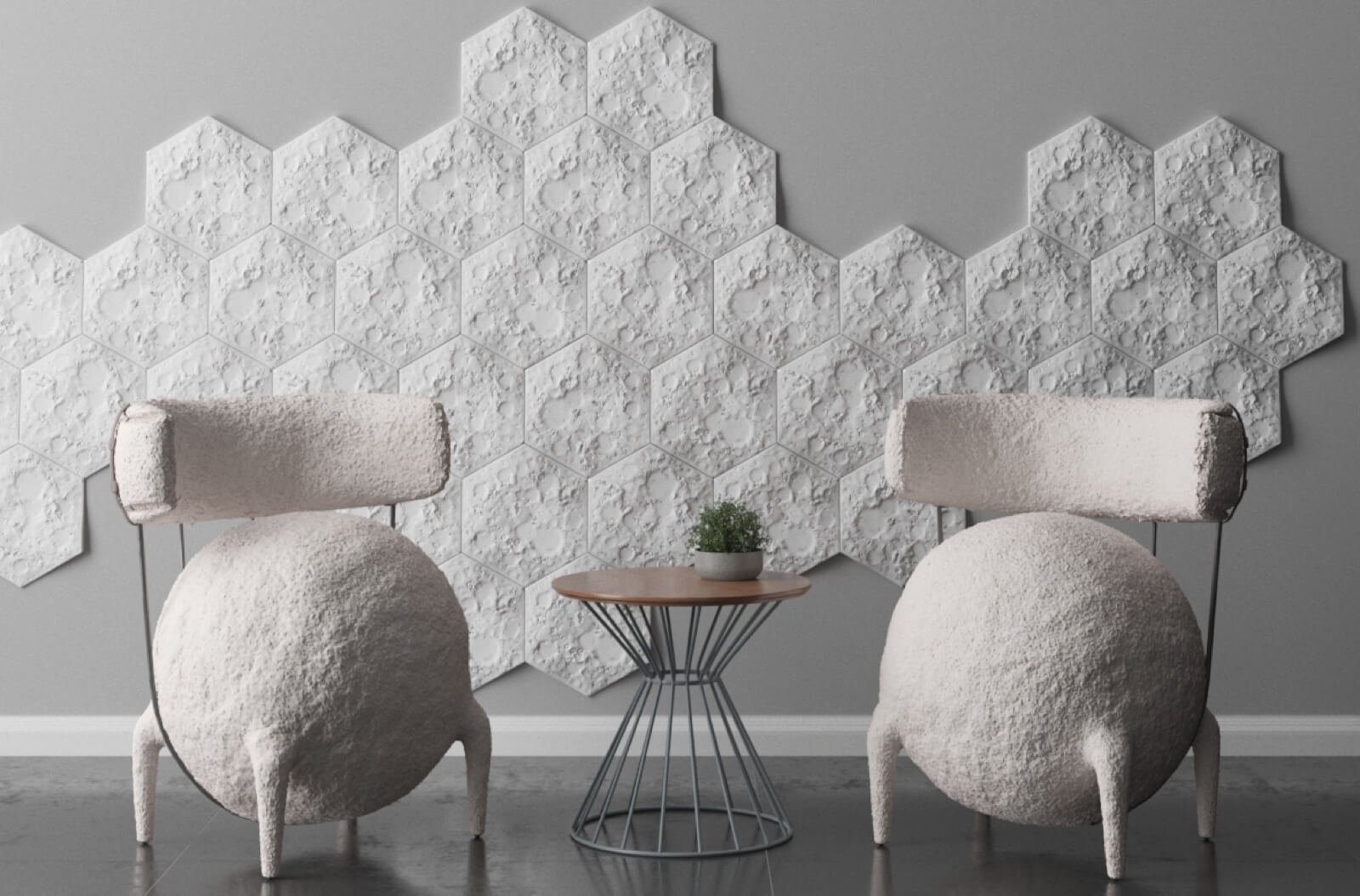
Taras Zheltyshev, ‘Lymphochair’, 2018
COURTESY: Taras Zheltyshev
Reflecting last year’s success, Collectible’s second edition had expanded to ninety-two exhibitors from fifteen countries, and attracted 15,000 visitors. The fair included the participation of leading museums Design Museum Gent, ADAM – Brussels Design Museum, CID au Grand-Hornu and the Hortamuseum. Its founders, Paris-based art and design consultant Clélie Debehault and Antwerp-based international artistic director Liv Vaisberg, explain that the concept is the first of its kind for this new, but quickly growing, market.
“We strive to show our visitors – many of whom are art collectors – that design is as interesting and valuable to collect as contemporary art,” explain the duo. “Many of them had no idea that collectible design was more than Jean Prouvé or Charlotte Perriand. Our mission is to encourage them to see contemporary design differently, to discover new concepts and appreciate new aesthetics – and also see 21st century collectible design as a viable investment.”
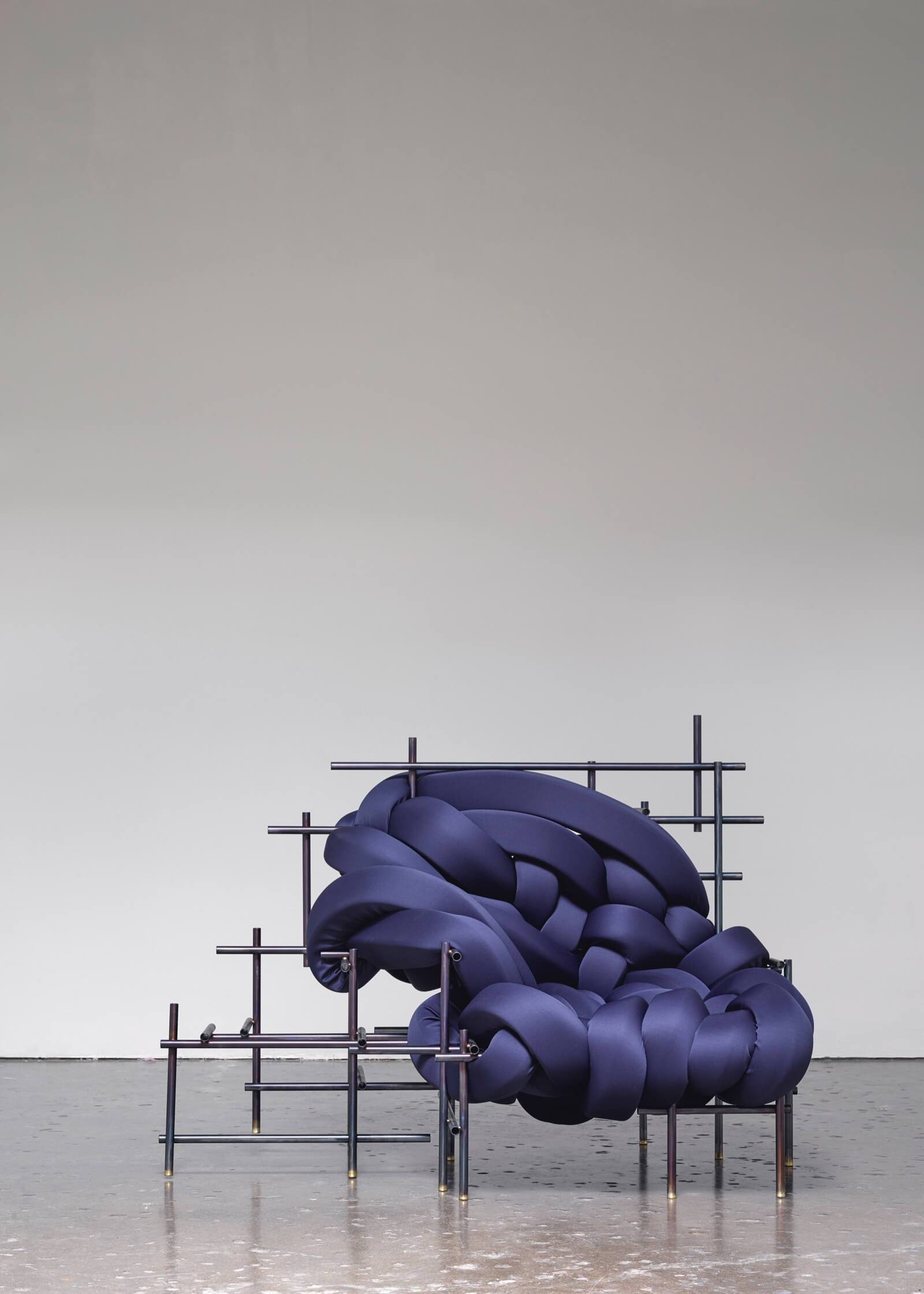
Evan Fay, ‘Lawless Chair’, 2017
COURTESY: Collectible / PHOTO: Clare Gatto
Unlike the soulless trade halls which host many commercial fairs, the Vanderborght building is an attraction in itself. Its five floors wrap around a central atrium with a skylight that allows light to flood atmospherically into every space. Instead of a series of booths, work from leading galleries such as Maniera, Victor Hunt and valerie_traan was then displayed like a tightly curated exhibition allowing visitors to discover each piece in a more informal way. Individual objects that stood out included: US designer Evan Fay’s extraordinary knotted ‘Lawless Chair’; the intriguing collection of ceramic-foam pieces from London-based Studio Furthermore; young Russian designer Taras Zheltyshev’s equally space age ‘Lymphochairs’ (inspired by white blood cells); and the ‘Offcut’ and ‘Airy’ marble pieces by Studio Raw Material, from the deserts of western India.
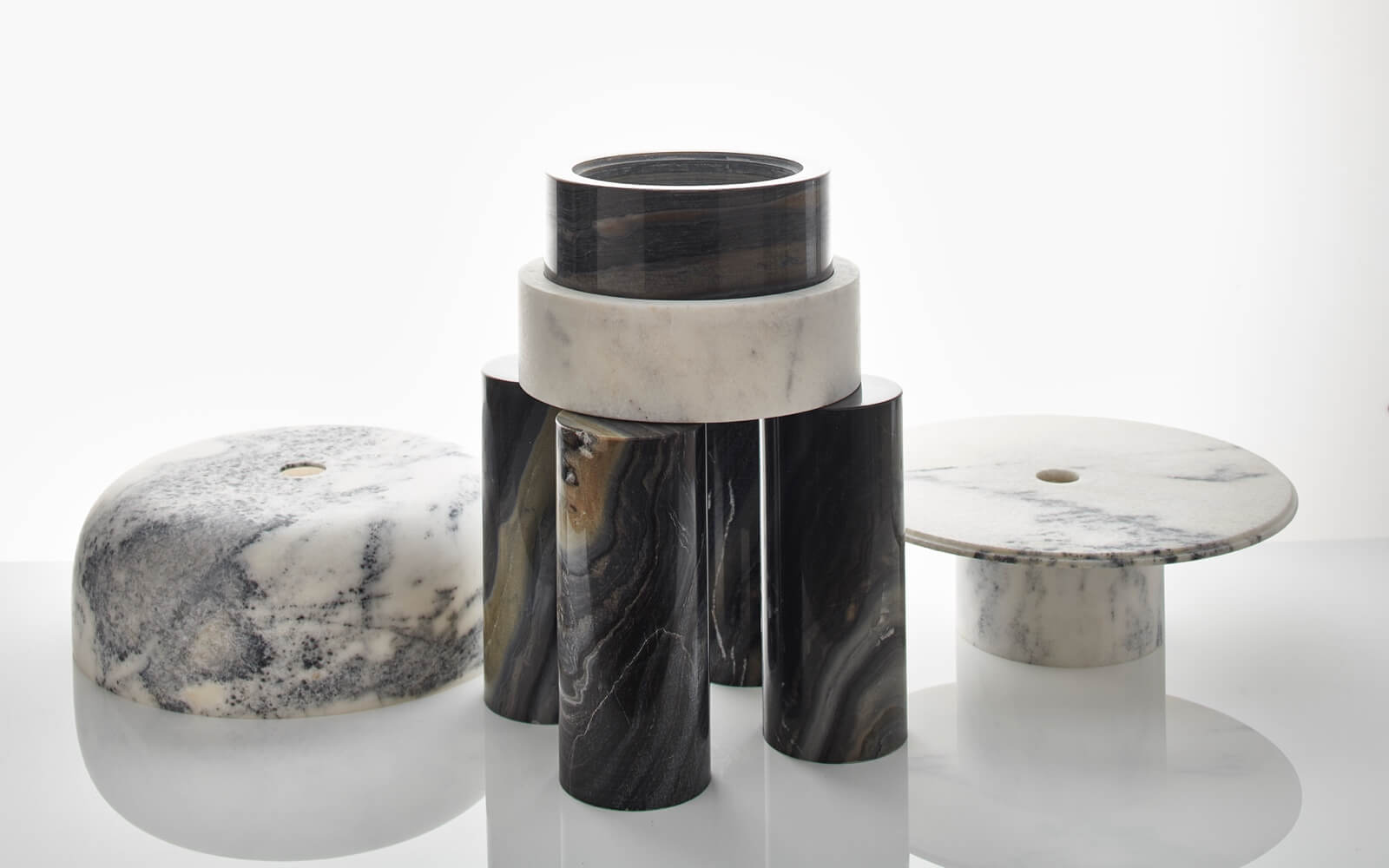
Studio Raw Material, ‘Airy-O’, floor lamp, 2017
COURTESY: Sylvain Deleu
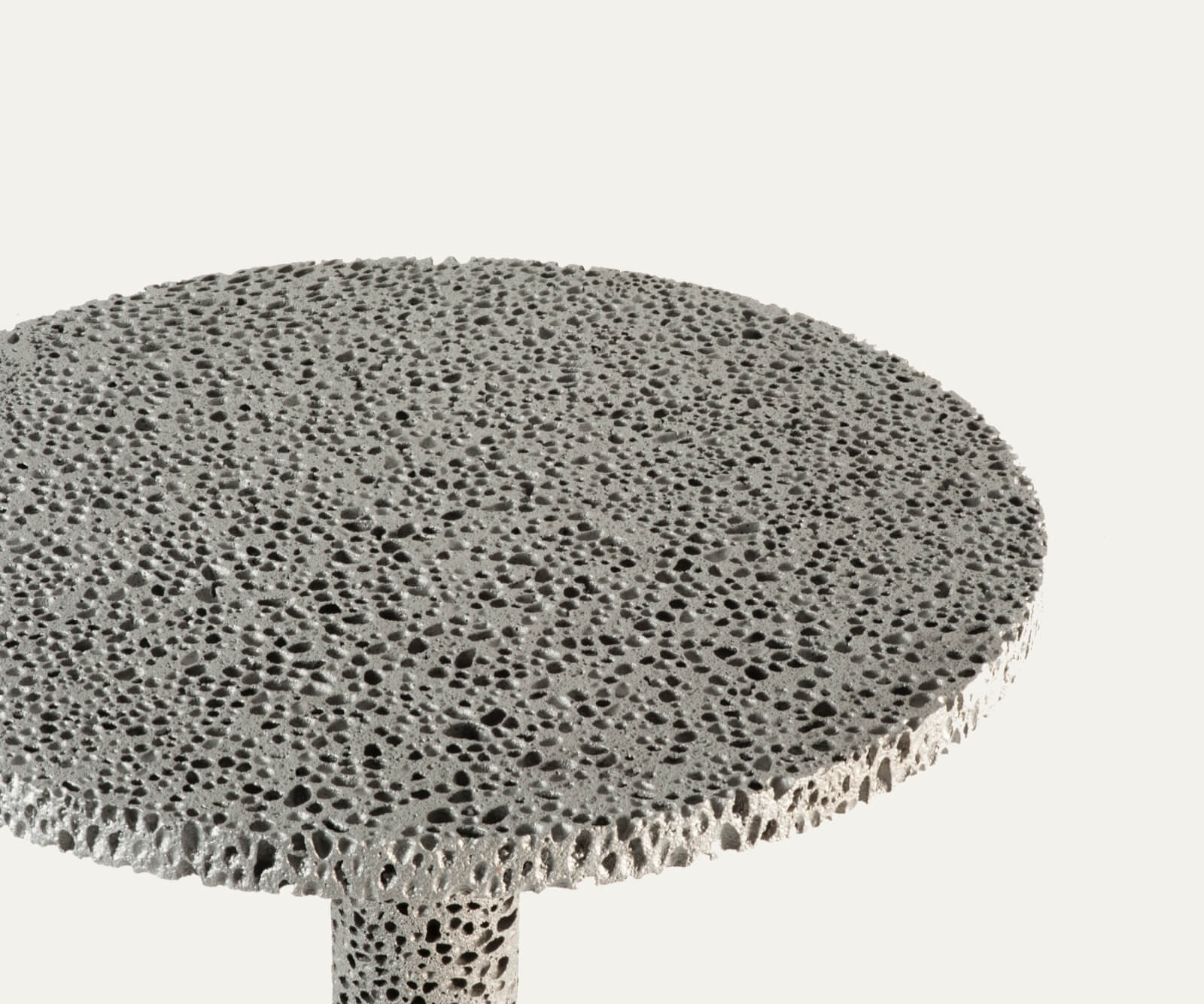
Studio Furthermore, ‘Replica’, lost foam aluminium occasional table, 2017
COURTESY: Studio Furthermore
The ambition of the founders was that architecture, art and design should blend seamlessly. “The walls within the space are of museum quality and arranged in a way that creates a smooth flow between the booths,” says Debehault. “You feel like you’re in an exhibition, more than a traditional fair with its alignment of white cubes.”
Rotterdam-based architectural practice Studio Verter brought their own imagination to bear on the fair’s scenography, using natural materials such as flowers and wax, but also waste plastic, nylon and old jeans, underlining this year’s strong emphasis amongst the galleries on sustainability and reusability. Other innovations included the invitation to advisory service dotsandplanes, offering guidance on how to collect design, as well as a dedicated concept restaurant linking food with furniture. A curated show of work by young graduates from London’s Royal College of Art, the Design Academy Eindhoven and other European graduate schools offered collectors work new to the market, while art galleries tested the waters of the market for ‘functional art’. So, Almine Rech showed sculptural ceramic pieces by Johan Creten alongside highly-coloured dreamy paintings by Jean-Baptiste Bernadet, while the dealership Skål presented a dialogue between London-based graphic designer Emily Alston (better known as Emily Forgot), who had created a series of wall-based assemblages, inspired by the Belgian capital, and Brussels-based textile and furniture designer Pierre-Marc Bonnenfant, who produced carpets and objects in response.
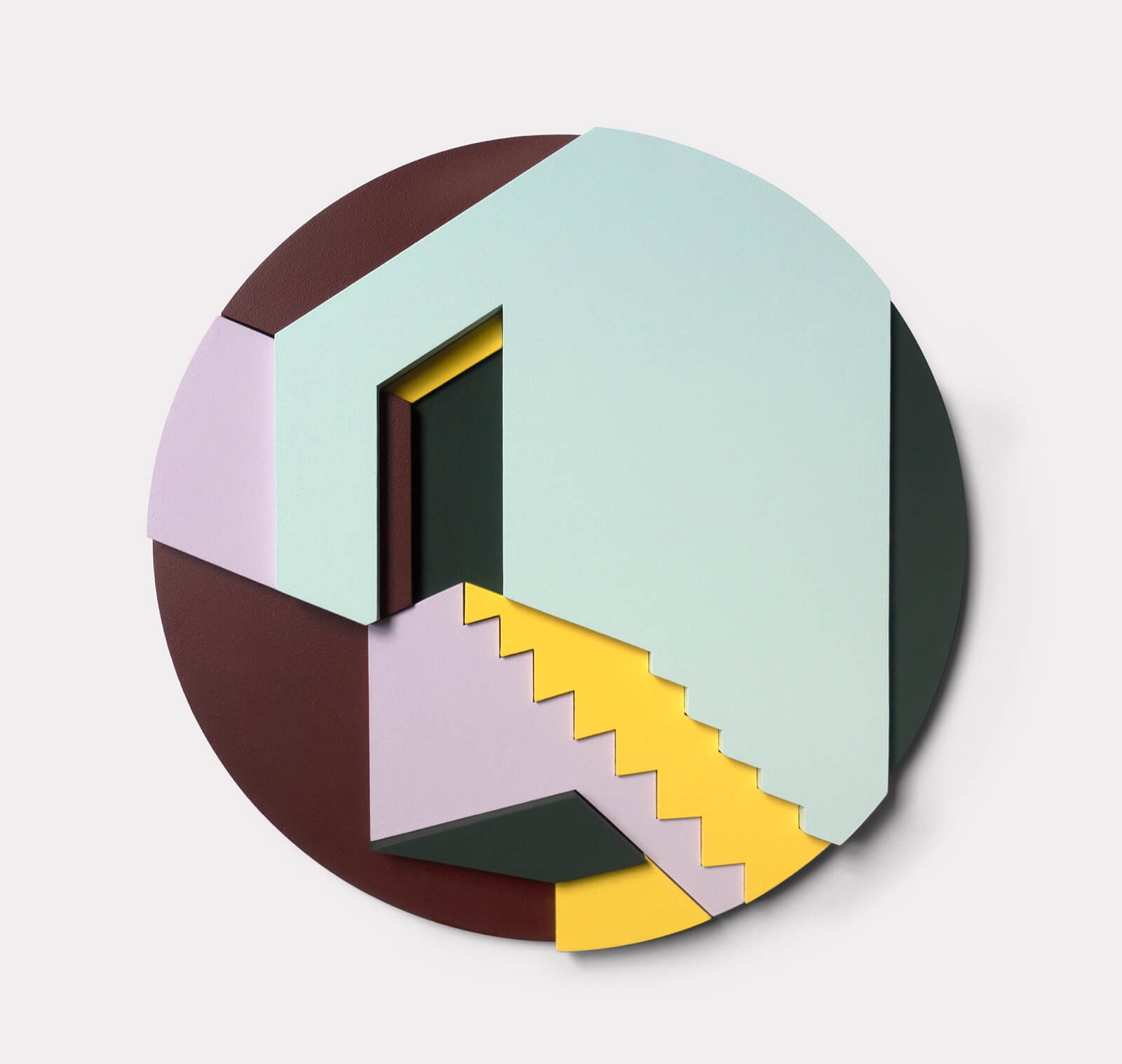
Emily Forgot, ‘Colour Construction II’, 2018
COURTESY: Emily Forgot and Skål
With galleries reporting strong sales and numerous visitors, Debehault and Vaisberg are looking forward to the third edition next year. “We are only at the beginning of our Collectible adventure and have many aspirations,” reflects Vaisberg. “We would like to grow the fair and make it truly global, with a wide panorama of international exhibitors, whilst maintaining our solid roots in Belgium.”
Collectible – pioneering fair for 21st century design.
